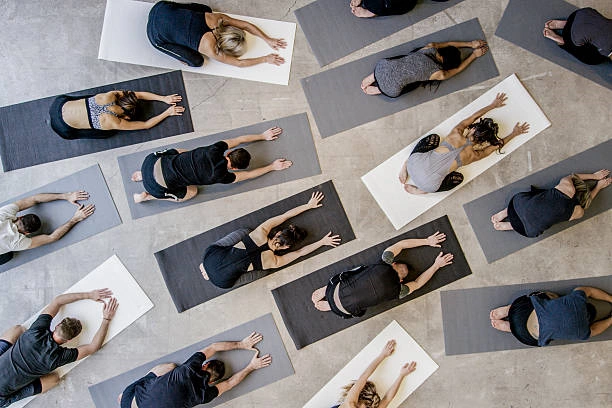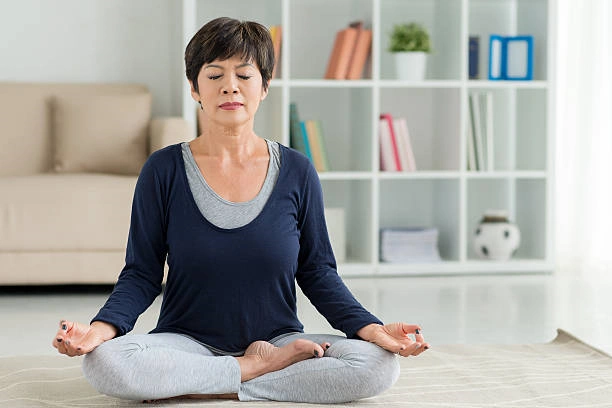Meditation – The Most Important Part of Yoga
What is Meditation?
Meditation is a precise technique for resting that achieves a state of consciousness completely different from the normal waking state. It is a way to explore all levels of oneself and ultimately experience inner awareness. Meditation is not part of any religion; it is a science. The process of meditation follows specific sequences, has clearly defined principles, and produces verifiable results.
During meditation, the mind is calm, relaxed, and focused inward. When meditating, you are fully awake and alert, but your thoughts are not centered on the external world or events happening around you. Meditation requires stillness to quiet the mind. As the brain remains silent, free from distractions, meditation deepens.

Inner Observation
From childhood, we are educated only to examine things in the external world. No one teaches us how to look within, to seek and validate the inner world. As a result, when we try to understand others, we remain strangers to ourselves. This lack of self-awareness is one of the main reasons for poor interpersonal relationships and the confusion and disappointment we often experience in life.
The purpose of meditation is to transcend the mind and natural experiences, which is described as peace and happiness. However, anyone who tries meditation knows that consciousness itself is the biggest obstacle between ourselves and this awareness. The mind is restless and unruly, resisting any attempt to train or guide it along a specific path. The brain has its own agenda, which is why many people sit down to meditate but end up fantasizing, daydreaming, or experiencing illusions, never truly attaining the tranquility of meditation.
We are taught behaviors and habits for the outside world, but never how to stay still and examine our inner selves. When we learn this through meditation, we reach the highest level of joy that humans can experience. All worldly joys are fleeting, but the joy of meditation is boundless and eternal. This is no exaggeration; it is a truth upheld by long-time sages, whether they have renounced the world to realize the truth or continue living in it without being affected.
Meditation is a practical method for calming oneself because it allows you to let go of biases and see everything openly and clearly. It is a way to train the mind so it does not get distracted or lost in endless chaos. Meditation teaches you to systematically explore the inner dimensions, recognize yourself, walk your own path, and understand your purpose. At the same time, learning to stay calm should not become a ritual or religious belief; it is an exploration of the entirety of the human body.

How to Cultivate Silence
The process of cultivating silence begins with the body. In the tradition of yoga, the instructor guides you to keep your head, neck, and body straight, sitting in a meditative posture. Once you adapt to this posture, you should develop the habit of practicing daily at the same time, in the same place, and in the same position.
Find a simple, tidy, quiet place where you won’t be disturbed. Sit on the floor, a mat, or a chair, keeping your back straight and eyes closed. Then, gradually let your awareness move through your body, allowing all muscles to relax except those that support the head, neck, and back. Take your time and enjoy the process of releasing inner tension.
Once the body is relaxed and calm, bring your attention to your breath. Notice which part of your lungs is moving as you breathe. If you are breathing primarily from the chest, you will not be able to relax. Let the breath primarily be driven by the diaphragm. Continue observing your breathing. At first, it may be irregular, but it will gradually become steady, without pauses or spasms.
Meditation is the process of fully focusing on an object of your choice. In this case, choose conscious breathing, allowing yourself to experience the breath in an open and accepting way. Do not judge, try to control, or change it. Fully open yourself, and eventually, the boundary between you and your breath will disappear. During this process, many thoughts will come to mind, each evoking some reaction: judgments, actions, further thoughts, or attempts to dismiss the thoughts.
At this point, if you simply become aware of the process instead of reacting to the thoughts, you will realize how restless your mind is. It twists and turns like you do when you can’t sleep at night. This is only a problem if you react, leading to an endless whirlwind of restlessness. But if you just notice these reactions as they arise, they won’t really bother you. Remember, it is not your thoughts that disturb you, but your reaction to them.

Focus
Meditation is simple—it is just about being present. Start by focusing on your breath. If a thought arises, notice it, open to it, let it pass, and then return to your breath. Your normal response is to react to all thoughts, which keeps you busy in chaos. Meditation teaches you to observe what is happening within without reacting, giving your mind freedom. In this freedom, you begin to experience yourself, separate from mental chaos. You feel joy, contentment, relief, and relaxation, finding a moment to breathe from the turmoil of life. Give yourself an inner vacation.
This inner search for peace is the foundation you need to apply to worldly activities effectively. Through meditation practice, you can learn to open up to what is in front of you in daily life and give it your full attention.
With patience and systematic practice, every action has a reaction. It is impossible to meditate and not gain benefits. You may not notice these benefits at first, but gradually, you are storing power in the subconscious. The seeds you plant today will eventually bear fruit. It takes time to see results; be kind to yourself. Meditation has layers—face yourself honestly, don’t worry about others’ experiences, and keep your focus on your goal. To make progress, you need patience and must work slowly.




